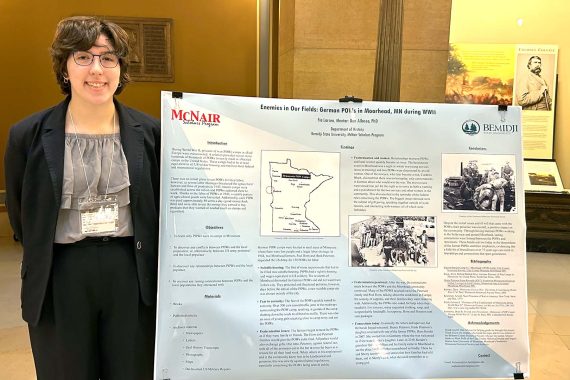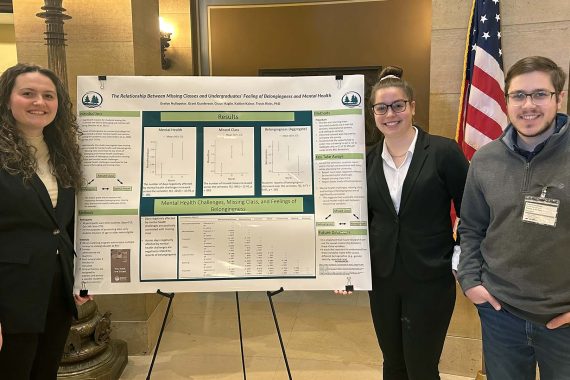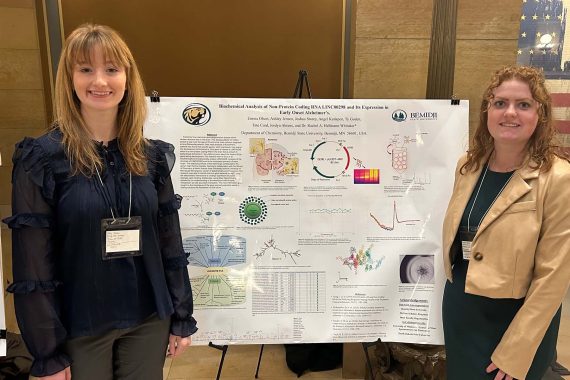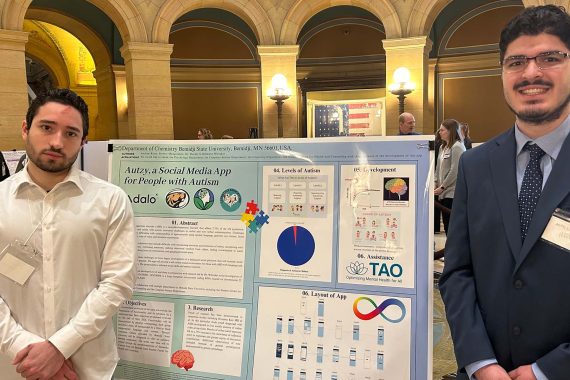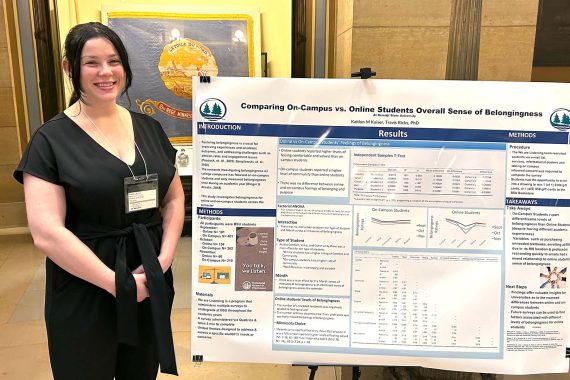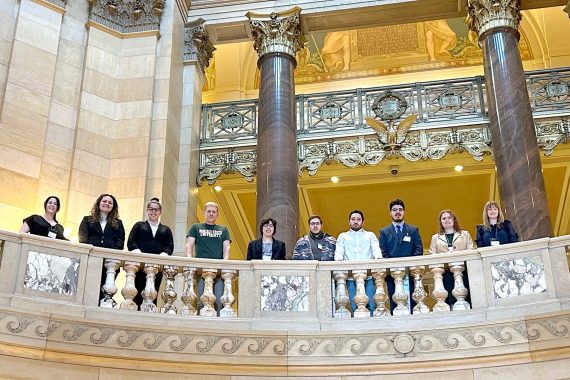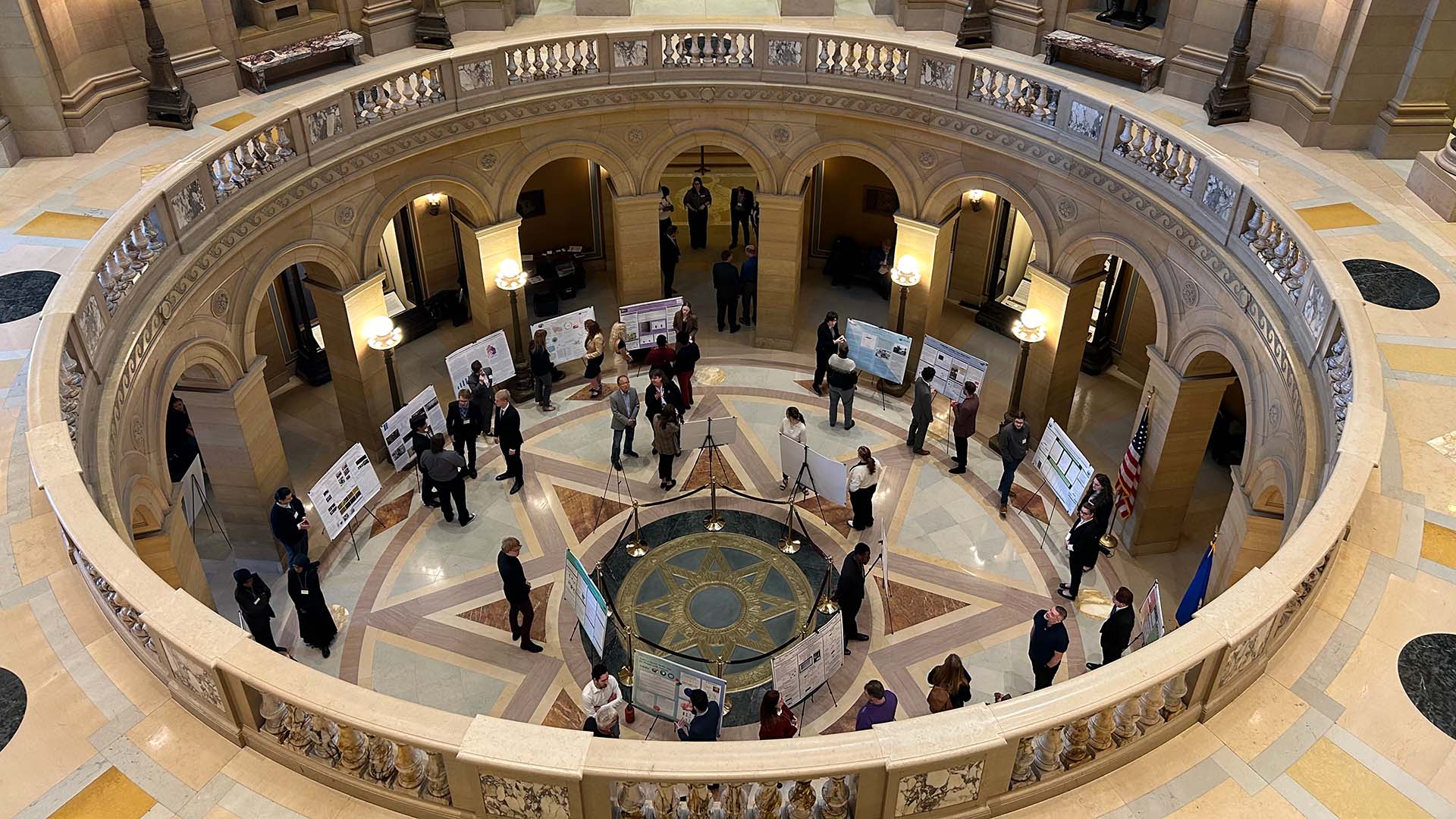
Fia Larsen, a Spanish and history double-major, won Outstanding Conference Poster at Posters at the Capitol, an annual event in the rotunda of Minnesota’s state capitol building that showcases undergraduate student research in Minnesota State’s system of colleges and universities.
Larsen, from Hackensack, was recognized for her presentation, “Enemies in Our Fields: German Prisoners of War in Moorhead, Minnesota, during World War II.”
Prisoner-of-war camps were not uncommon in the United States and, at the request of two local farmers, a camp was established in Moorhead in 1944. From Larsen’s poster:
“These camps grew and developed as prisoners were moved from the overcrowded POW camps in allied Europe to the US. Initially, these POW camps in the United States served only as a place to house prisoners, however, as the war continued and the dire need for laborers in the United States increased, the federal government began considering other labor sources. One of these sources were the prisoners themselves. Through the Army, individual camps were established wherein POWs, often employed as agricultural or forestry workers, filled empty labor roles. These POWs are largely credited for saving the agricultural harvest of 1943 and maintaining the flow of products.
“The first German POW camp established in Minnesota, a branch camp from Camp Algona in Iowa, was established in Moorhead in 1944. By the request of Hank Peterson and Paul Horn, controversially 150 POWs would later come to work on their farms and live at a nearby camp. Despite the illegality of fraternization with prisoners, the farmers of Moorhead and the POWs quickly established friendships. Sometimes the fraternization went beyond the farms and led to scandal. Mostly, however, it led to a lasting connection and legacy that can still be seen today.”
Larsen’s faculty mentor is Dr. Dan Allosso, BSU assistant professor of history. The poster for her presentation is available online.
Larsen’s presentation was one of five by BSU students at this year’s Posgters at the Capitol event. Others were:
- “Autzy, a Social Media App for People with Autism,” by Robert M. and Andrew Rizea; faculty mentor Dr. Rachel Hellman Whitaker, associate professor of chemistry.
- “Biochemical Analysis of Non-Protein Coding RNA LINC00298 and Its Expression in Early Onset Alzheimer’s,” by Ashley Jensen and Emma Olson; faculty mentor Dr. Rachel Hellman Whitaker, associate professor of chemistry
- “The Relationship Between Missing Classes and Undergraduates Feelings of Belonginess and Mental Health,” by Grant Gunderson, Grace Haglin, Kaitlyn Kaiser and Evelyn Hullopeter; faculty mentor Dr. Travis Ricks, professor of psychology
- “Exploring Belongingness among Online and On-Campus Students at Bemidji State University,” by Kaitlyn Kaiser; faculty mentor Dr. Travis Ricks, professor of psychology
